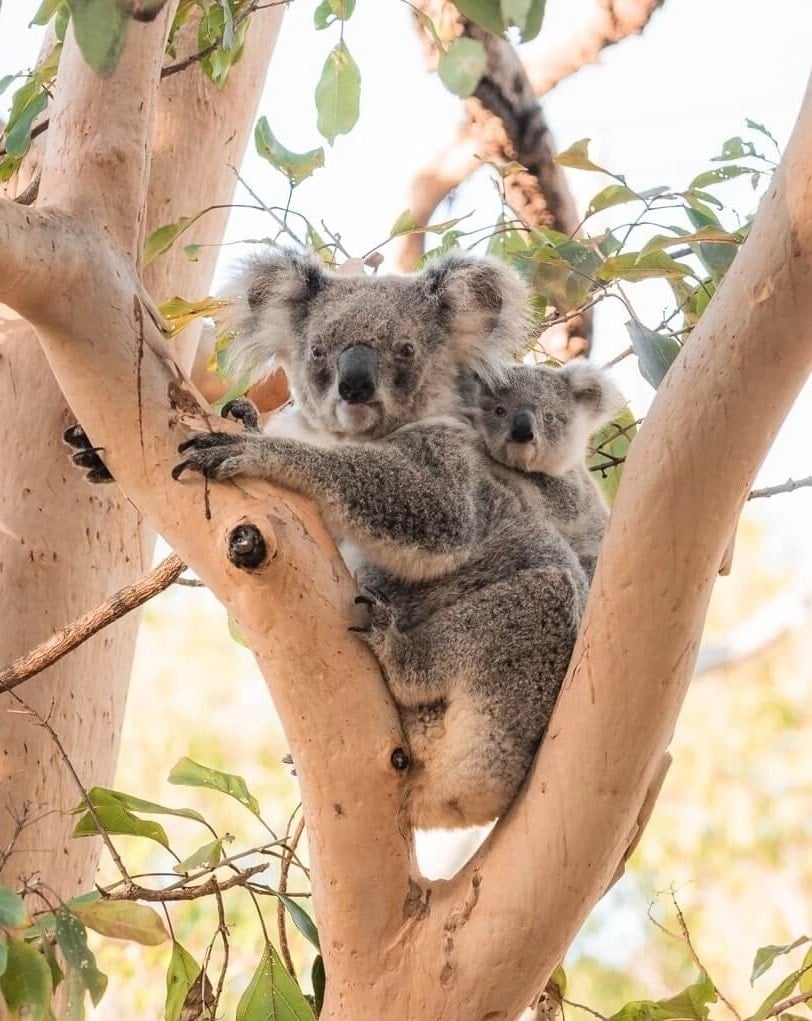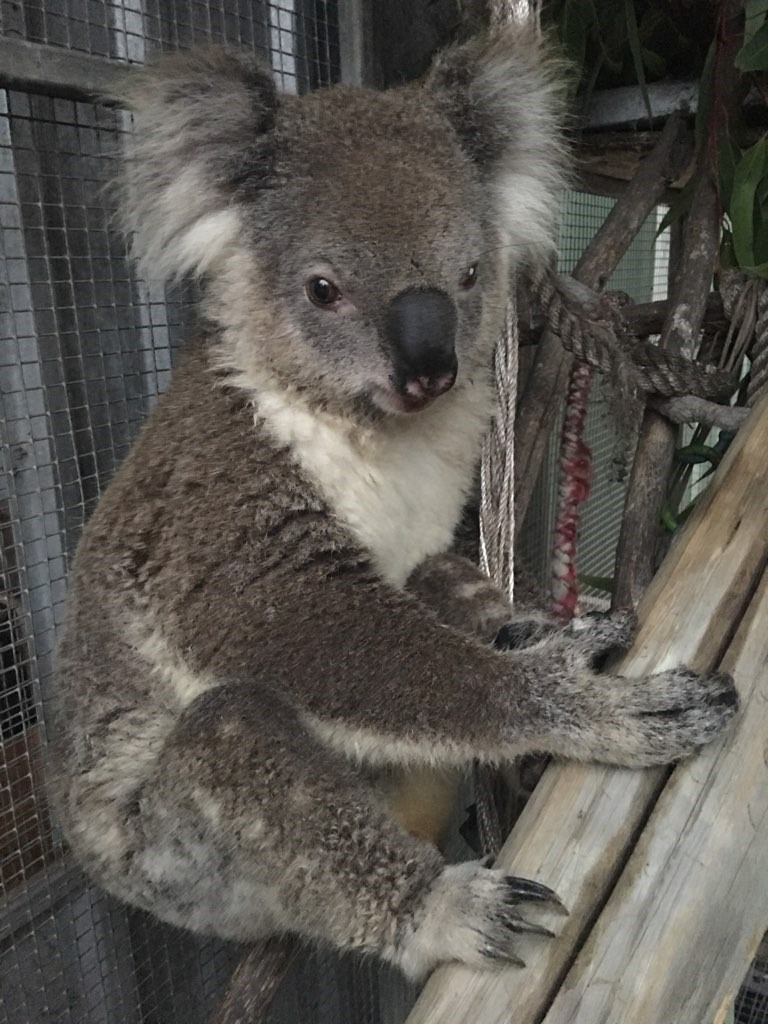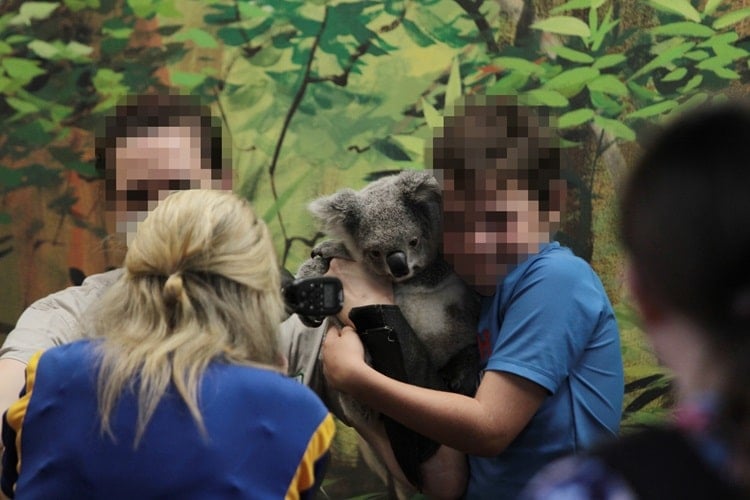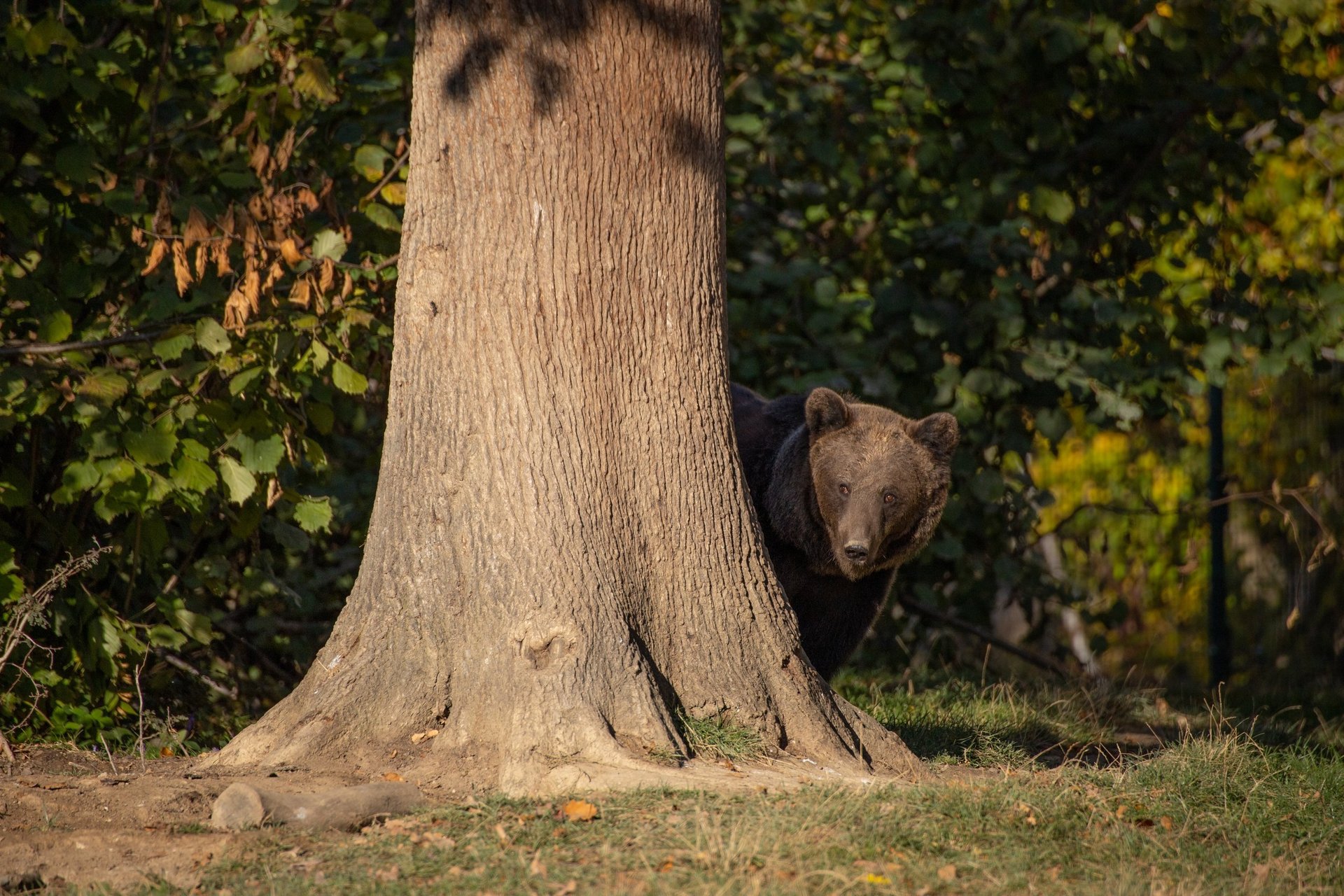Still Too Close for Comfort
Learn more about our 2025 research and investigation into koala cuddles at popular Queensland wildlife tourism venues.

Koalas are well adapted for life in the trees, with sharp claws for climbing.
They can be found mostly across the eastern states of Australia.
The adult males weigh between 6-12kg and females between 5-8kg. During breeding, males make loud snarling coughs and bellows.
Koalas have a specialised diet, eating only a few of Australia’s 600 types of eucalyptus tree species and showing strong personal preferences for specific types of eucalypt leaves.
Naturally solitary animals, koalas live within a network of overlapping home ranges, which allows contact between males and females for mating.

Koalas are stressed when constantly surrounded by people in close encounters at theme parks and zoos. They display ‘visitor-vigilant’ behaviours like avoiding visitors by trying to climb up and away from people. Or keeping their eyes wide and ears pricked.
In the wild, koalas sleep up to 20 hours a day to conserve energy after eating difficult-to-digest eucalypt leaves. But some captive close encounters force them to be awake and active for hours on end.
Most visitors to wildlife entertainment venues love koalas or want to learn more about them. But they may not know about the stress and suffering wild animals like koalas endure when they are being cuddled or held for a photo.
It's heartbreaking to see how koala populations are increasingly affected by disease, deforestation and habitat destruction.
Queensland is a major deforestation hotspot and in just the last decade, tree clearing has tripled in NSW, leaving important koala habitats fragmented or destroyed.
With no trees to go to, koalas are exposed to the dangers of the ground and at risk of being hit by cars, attacked by dogs, and falling ill from stress-induced diseases.
Koalas are now endangered in NSW, QLD and the ACT, and their numbers keep declining.
Many koala populations are also vulnerable to the infectious disease Chlamydia, which can cause blindness and reproductive tract infections.


Many wildlife entertainment venues and theme parks in Queensland like Australia Zoo and Dreamworld offer koala “cuddle” experiences for photos. Reducing visitor demand for cruel koala cuddles is vital to stop wild koalas being bred in captivity for our entertainment and profit.
Call on the Queensland Premier to join other states in banning cruel koala encounters, including koala cuddles and selfies.

Learn more about our 2025 research and investigation into koala cuddles at popular Queensland wildlife tourism venues.
Call on the Queensland Premier to join other states in banning cruel koala encounters, including koala cuddles, selfies.
News
No matter how well they are looked after in captivity, a wild animal's needs can only be fully met in their wild environment. See wild animals in the wild! There’s no more special or exciting way to see them.

Join thousands of animal lovers fighting to protect wildlife and give farmed animals good lives. Sign up now to receive emails with all the ways you can help.
Sign up